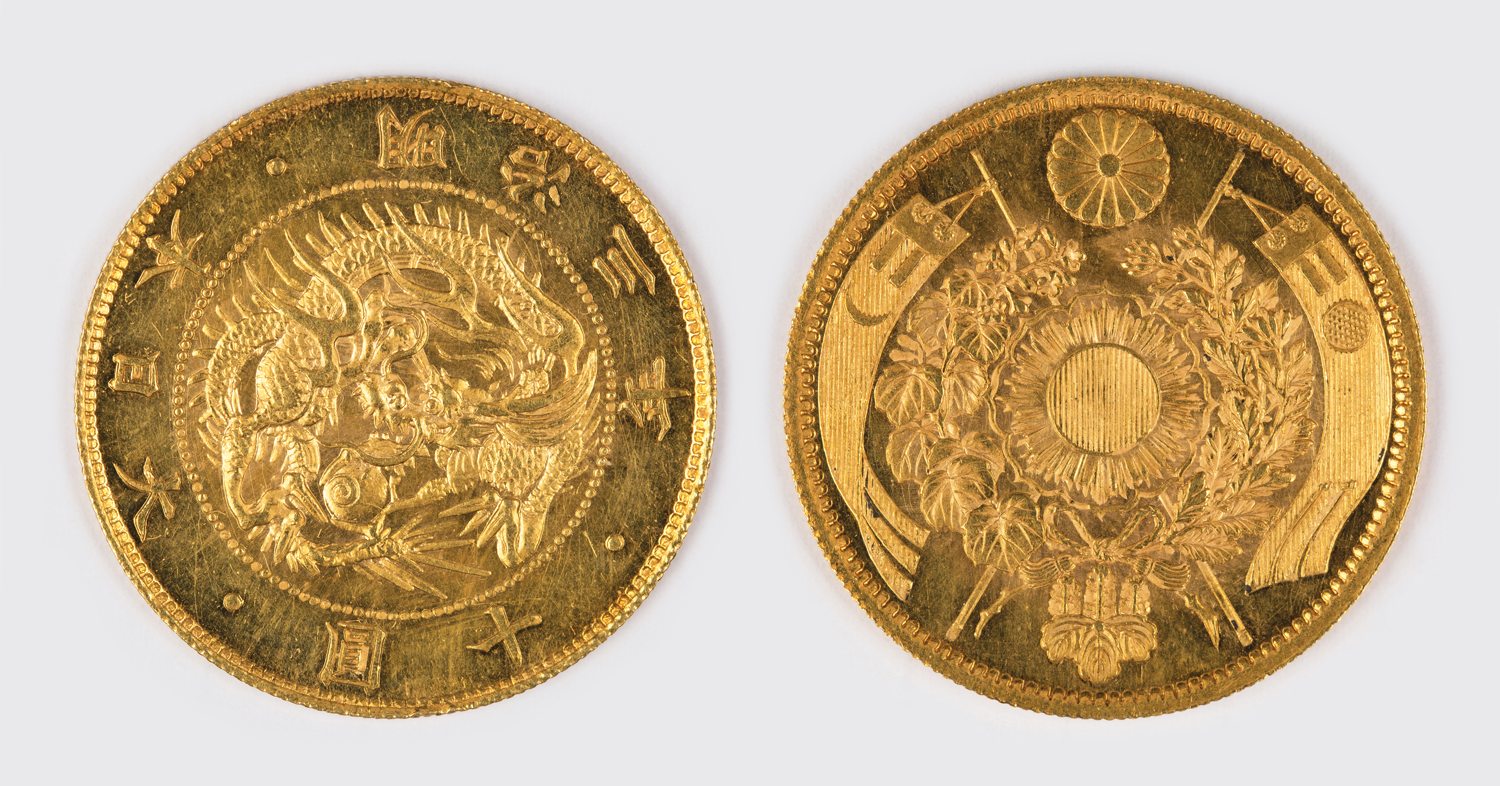
A Japanese Meiji ten yen Year 3 pattern gold coin dating from 1870 has just sold at Toovey’s for £260,000. A world record price at auction.
Measuring just 3.2cm the coin’s obverse is decorated with a dragon design within a beaded border surrounded by a frame of characters, whilst the reverse has a sunburst flanked by banners between Imperial kiku and kiri mon. It is in extremely fine condition.
Toovey’s valuer and auctioneer William Rowsell, describes how he discovered the coin on a routine visit to a family home in Walberton, West Sussex. He says “There were a small group of gold coins in a brown envelope. This one coin particularly stood out as being Japanese and worth further research.”
William continues “I returned to Toovey’s salerooms with a car full of an eclectic array of collectors’ items including the coin. I showed it to our specialist Mark Stonard who immediately identified it as being an extremely rare Japanese Meiji ten yen Year 3 pattern gold coin, the first coin of its type after Japanese decimalisation in 1870.”
Mark Stonard explains “This type of coin was originally intended for general issue but it was too fragile and the design was changed to a smaller thicker design. Only four examples of this coin were known to exist before our discovery, one is in the British Museum, one is in the Bank of Japan Collection, and two were auctioned in the USA in 2011 and 2014. The die anomalies in the coin’s striking were identified as being correct by comparing them to those found on the example in the British Museum.”
William Rowsell describes how the seller, a keen genealogist, was able to provide the most remarkable provenance. He says “The coin had come to them by family descent from George Henry Williamson Esquire of Worcester [1845-1918]. George Williamson was a former mayor of Worcester, a manufacturer and a Conservative politician. But the vendor thought that it was likely that this coin was originally acquired by George’s father, William Blizard Williamson [1811-1878]. Mr Williamson was a tinsmith from Cork who eventually settled in Worcester, where he founded the Providence Tinplate Works in 1858. George and his brother William Blizard the younger took over the company after their father’s death. George Williamson deposited this coin with several others for some time at Lloyds Bank in Worcester, incorrectly labelling it ‘Chinese gold piece’, suggesting that he was unaware of its significance.”
It is always exciting to discover something that has lain undiscovered and forgotten, especially when it realises a world record price of £260,000. There is much talk about the value of precious metals but the collectors’ value is so often much higher than the bullion price.
William Rowsell, Mark Stonard and the seller are still celebrating this remarkable coin, its discovery and the result.